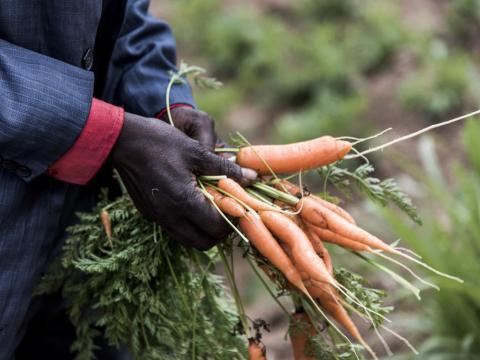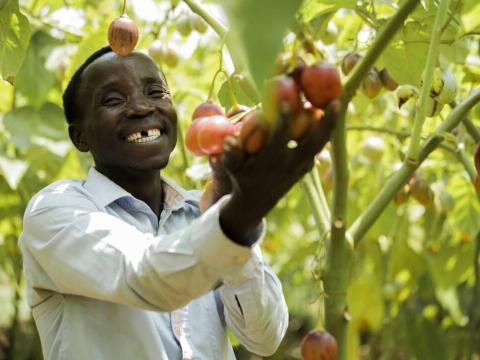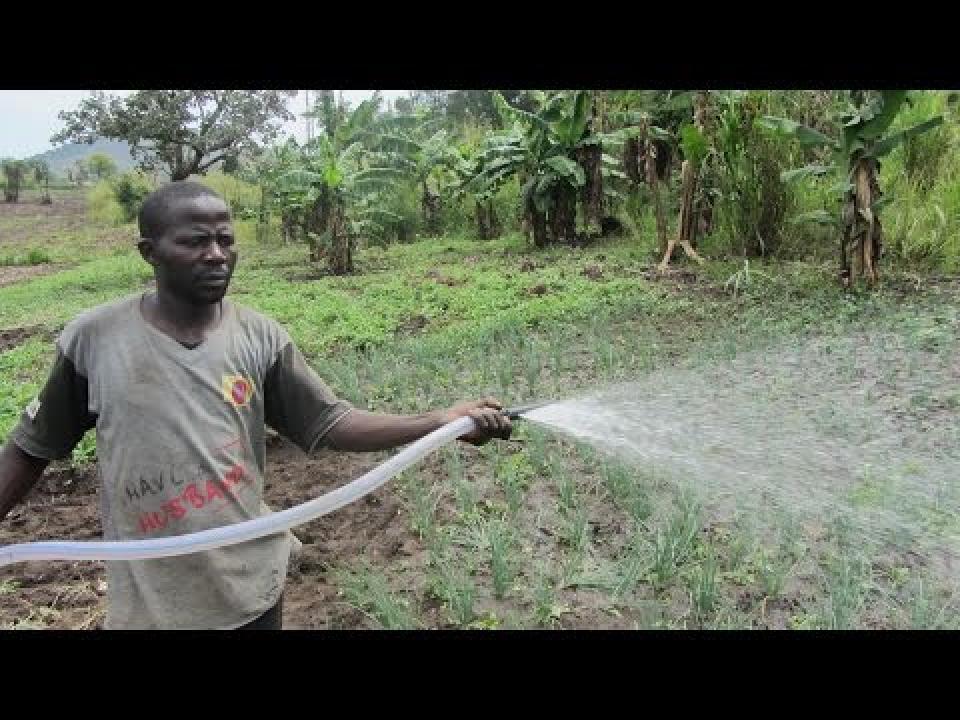
The untapped potential of agroforestry
By Tony Rinaudo, Principal Natural Resources Advisor
A response to "global tree restoration potential"
Bill Mollison, father of permaculture, once said: “Though the problems of the world are increasingly complex, the solutions remain embarrassingly simple.” And, this may well be the case for climate change.
A recent Science magazine[1] article revealed that there is enormous global tree restoration potential – nearly a billion hectares in fact, enough area to plant around 500 billion trees. And, importantly, the suitable sites are reported to be outside of existing forests and agricultural or urban land.
The 0.9 billion hectares of new tree canopy cover, which could store 205 gigatonnes of carbon in areas that would naturally support woodlands and forests give grist to the argument that restoration of trees is among the most effective strategies for climate change mitigation. Though the availability of that land, and the question of who foots the reforestation bill will need to be addressed, and researchers[2] rightly call out that there are no magic bullets – a comprehensive approach to reducing greenhouse gases is required – this news is still very good. And, it only gets better!
What the authors have not factored in is that beyond the 0.9 billion hectares of land presumed to be suitable for tree planting, at least two billion hectares of agricultural and pastoral lands are suitable for agroforestry (trees on crop land) and silvopasture (trees on pasture land). Inclusion of trees in these already utilised areas not only makes for beautiful landscapes, it simultaneously increases their productivity and resilience, while helping to mitigate climate change.
Many people in government, climate, development and agricultural circles have a false perception that agricultural land and trees are mutually exclusive, and that globally the practice of agroforestry is of little importance. But in fact, with management of appropriate species, the reverse is true – they are not only compatible, they are complementary. Additionally, few decision makers seem to be aware of the vast areas of land currently under agroforestry, nor the potential area for a massive increase of trees on agricultural lands.
According to a study [3] on the global Extent and Geographical Patterns of Agroforestry, the practice is already widespread: In fact, 46 percent of all agricultural land area globally, representing over one billion hectares of farmlands, have greater than 10 percent tree cover. This coverage of useful trees positively impacts the livelihoods of 30 percent of rural populations, and 558 million people. Tree cover on agricultural lands is increasing year-by-year, and this annual increase in tree cover is storing an additional 740 million tonnes of CO2 each year. With further policy and development support this rate of CO2mitigation could be increased to over a billion tonnes per year in the near future.

A modern precedent for low-cost, rapid adoption of agroforestry
Agroforestry is particularly prevalent in Southeast Asia, Central America and South America, with over 80 percent of the agricultural lands in these regions currently under agroforestry. Agroforestry systems have been historically significant as sources of food and fuel for forest-dependent and rural communities in Latin America, Sub-Saharan Africa and South and Southeast Asia. Agriculturalists that rely on such systems make the most efficient use of limited land. Agroforestry systems also provide a range of non-timber forest products such as food, honey, medicines, and they are also of religious or spiritual value.
Agroforestry is practised both in highly mechanised commercial enterprises and on labour-intensive smallholder farms. Receptiveness to agroforestry may be greater amongst smallholder farms. Eighty percent of the farmland in sub-Saharan Africa and Asia is managed by smallholders, with farms of less than 10 hectares. Out of the 2.5 billion people in poor countries living directly from the food and agriculture sector, 1.5 billion people live in smallholder households. Smallholders provide up to 80 percent of the food supply in Asia and sub-Saharan Africa. Unlike widespread perceptions, sustainable smallholdings can be very productive, and many of them practise agroforestry[4].
But, how can millions of smallholder farmers living in remote, difficult to reach locations, and often with limited access to communications, be reached, let alone convinced to scale up and out the adoption of agroforestry? Fortunately there is a modern precedent for rapid, low cost adoption of a form of agroforestry called Farmer Managed Natural Regeneration (FMNR). From the mid-1980s, over a 20-year period, the average tree density in the agricultural zone of the Niger Republic increased across five million hectares, from around five trees per hectare to over 40 trees per hectare. In 2016, the US Geological survey conducted a study across seven West African countries (Senegal, Mali, Ghana, Burkina Faso, Niger, Chad, Nigeria) and found more than 15 million hectares of FMNR, six million of which are in the Niger Republic.
Dennis Garrity, the United Nations Drylands Ambassador, stated that the “mass scaling-up of Farmer Managed Natural Regeneration is far more cost effective than conventional practices”.
A recent study in Malawi uncovered over one million hectares of FMNR with no apparent links to any government or NGO initiative. The main “inputs” that helped stimulate adoption were awareness of the technique, and peer acceptance and promotion. And more recently, radio promotion and in some cases creation of a favourable policy environment, which encourages private landholders to manage trees on their land. The significance of this is that this reforestation phenomena is largely a bottom-up movement. By studying the drivers of this movement, we have an opportunity to greatly accelerate the pace of adoption.
Such developments have largely gone unnoticed by climate scientists and policymakers, and yet, their contribution to climate change mitigation is significant. On farmland across the Sahel with relatively low tree densities of 40 trees/hectare, one tonne of CO2/hectare/year is being sequestered. However, in wetter areas, where FMNR has been applied in community forest restoration projects, as much as 15 tonnes of CO2/hectare/year are being sequestered.
World Vision is committed to addressing climate change. It has already introduced FMNR into development programming in 25 countries. World Vision is a founding member of the Global Evergreening Alliance, an international NGO which facilitates the development and implementation of massive-scale environmental restoration and sustainable agricultural intensification projects in developing countries around the world. World Vision International CEO Andrew Morley recently wrote that, “World Vision is committed to protecting the world and environment that God entrusted to us. Our FMNR strategy is an amazing way of restoring land and restoring lives.”
Now is the time to capitalize on lessons learnt in scaling up agroforestry and to mount a massive campaign to restore degraded landscapes.
[1] https://science.sciencemag.org/content/365/6448/76
[2] https://www.ctvnews.ca/sci-tech/why-planting-one-trillion-trees-won-t-solve-climate-change-1.4498386
[4] http://www.fao.org/fileadmin/templates/nr/sustainability_pathways/docs/Factsheet_SMALLHOLDERS.pd

